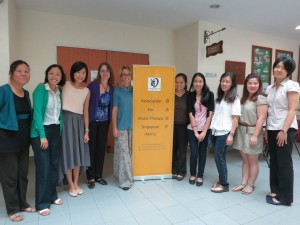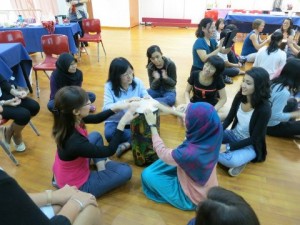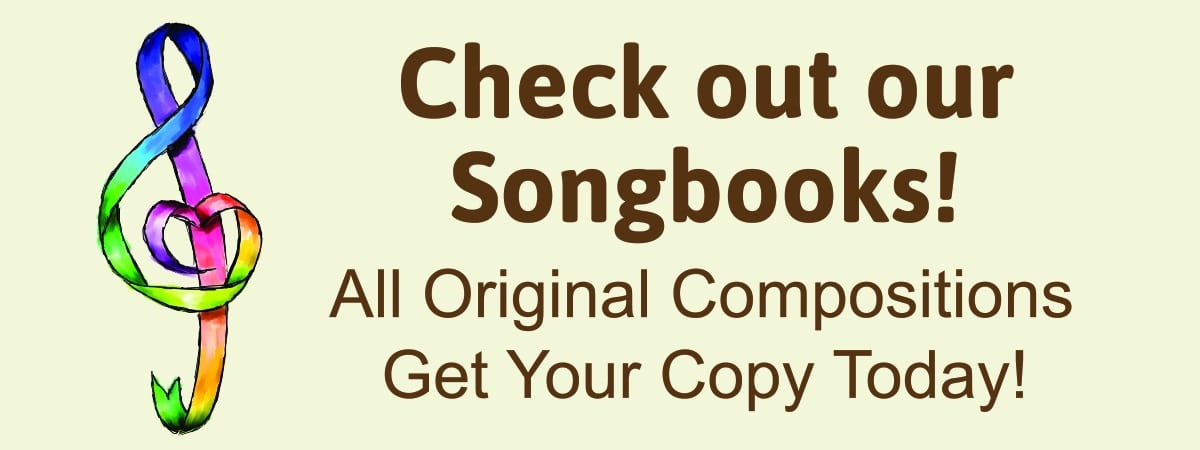Association for Music Therapy Singapore
2nd Symposium 2012: Music Therapy and the Special Child
I was sitting at my work desk writing up some session notes when an e-mail popped up that I just had to stop and read – ‘Will you travel halfway around the world to present on music therapy and special education?’ The passion and professionalism of the members of the Association for Music Therapy Singapore almost reached out through the computer screen with steadfast persuasion. I blinked my eyes, read it again, and without stopping to get the details, decided to say ‘yes’. What a great experience!
There are only around twenty members of AMTS (http://singaporemusictherapy.wordpress.com) but through their commitment to music therapy, they have funded, planned and presented two world-class symposiums on music therapy for parents, teachers, administrators, psychologists and other therapists. This year’s program encompassed five days of in-service, demonstrations and staff development. Dr. Katrina McFerran of the University of Melbourne, Australia was my co-presenter and we quickly found ourselves on the same musical and therapeutic page. If you are not familiar with Dr. McFerran’s work, I encourage you to read her research and her newest book Adolescents, Music and Music Therapy-Methods and Techniques for Clinicians, Educators and Students. So how did this handful of women make this event happen? Passion, professionalism and persistence.
Several moments from that week will stick with me for a long, long time. One happened on the day that focused on providing information for parents during the afternoon ‘tea break’ (we should adopt this in the United States!) A mom and dad had brought along their young son, about seven, who was on the autism spectrum. Well, there was a floor drum and a few minutes and I had been away from my young students for several days – so I couldn’t resist sitting on the floor and playing with him. Although Katrina and I had been talking about the power of music and music therapy, those few moments when the young boy and I were communicating through the drum and pitched sounds explained everything. Later in the session, Katrina had the participants create their own music and share it with the group. Watching the dad of the young boy get up, take the microphone and sing to and for his young son brought tears to my eyes.
AMTS sent me a picture of one of the other moments. Singapore is a multi-cultural and multi-lingual nation. Although English is the primary language, you hear many languages being used. As Katrina, the members of AMTS and I worked with teachers and therapists at the Rainbow School, I paused to look out at the audience. So many different faces, so many different styles. But everyone had come together through shared music and shared meaning.
Okay, so the last moment involved the hospitality and generosity of the members of AMTS. We were treated to an amazing array of food and treats. Our music therapy colleagues were so concerned that we were made to feel welcome and that we had the chance to appreciate all aspects of the cultures of Singapore.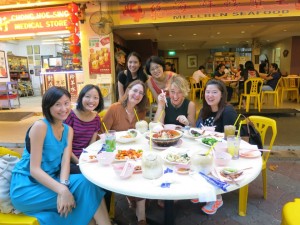
So how has this changed my way of practice? A renewed sensitivity to the cultures, traditions and languages of the children and families that I work with. I will need to listen more carefully to the music of my families and to show my openness and welcoming by including some of this musical material in my work. Thank you to the AMTS for helping me to respect all children and all families and all cultures.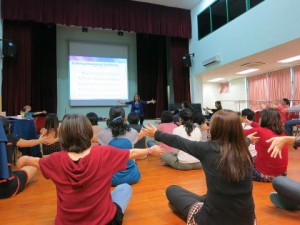
Do you work with children from different countries? different cultures? maybe different traditions within your community? I would love if you could share some of the successes you have had in incorporating other music into your practice. Let’s start the conversation!
Talk to you again soon,
Beth
